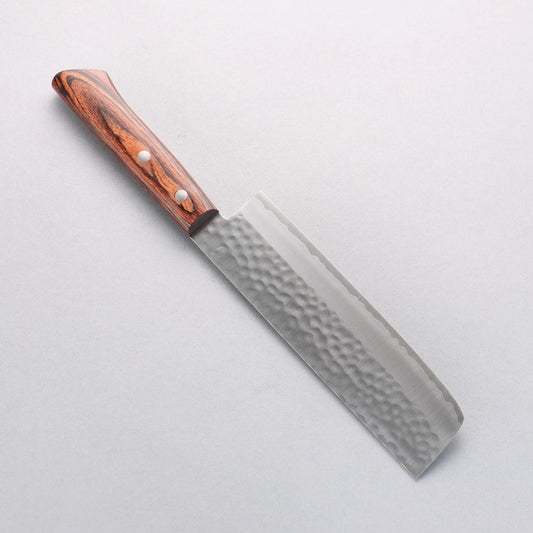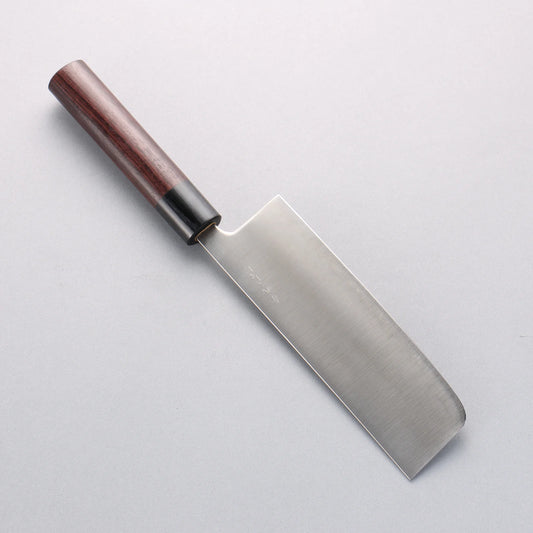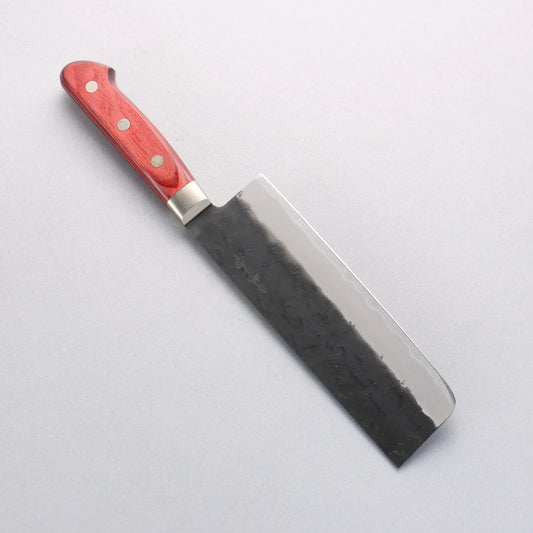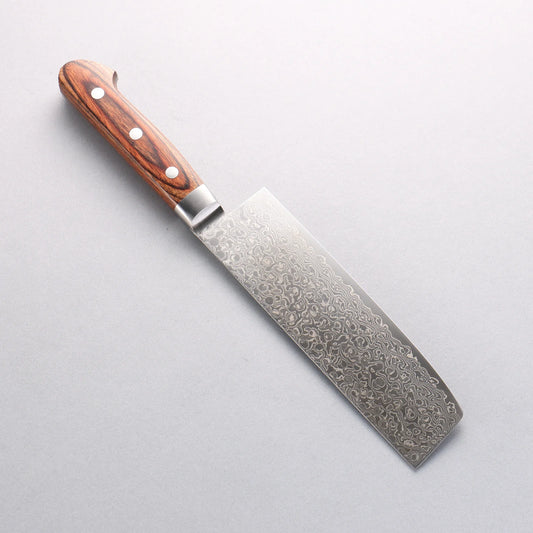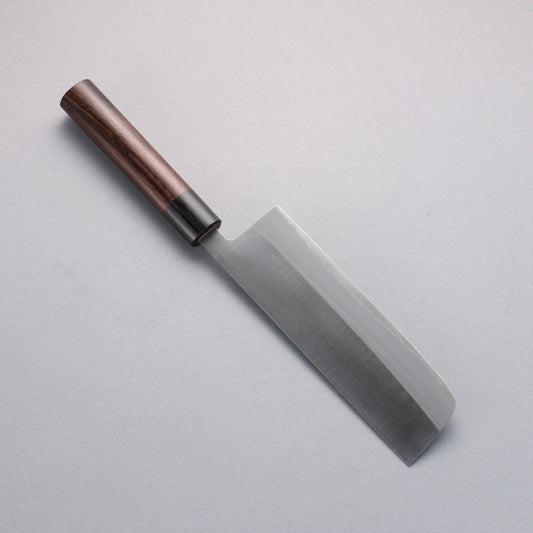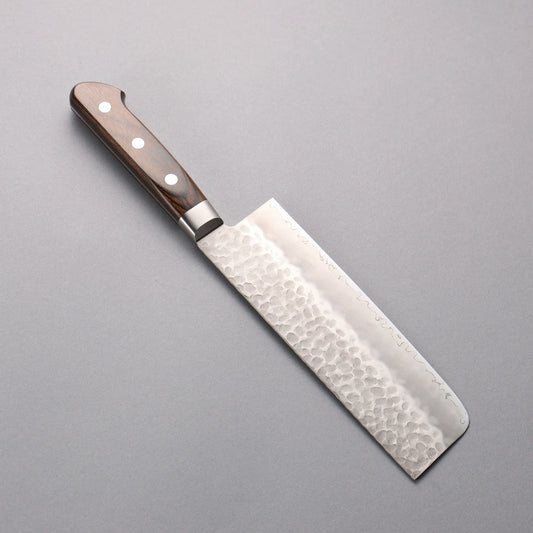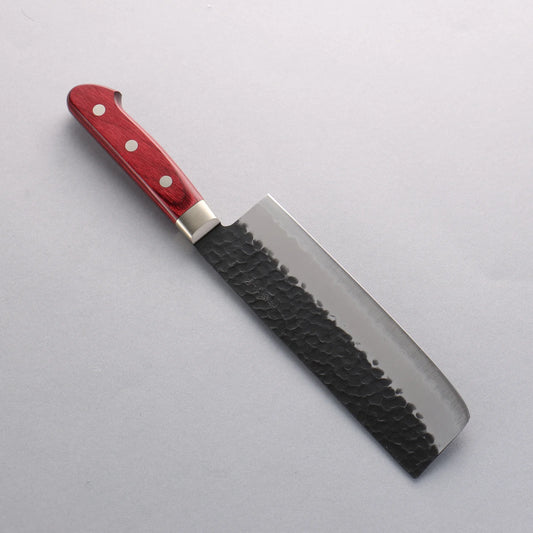Collection: Nakiri
The Nakiri bōchō (菜切り包丁), or “vegetable-cutting knife,” is a revered staple in traditional Japanese kitchens, crafted specifically for the art of preparing vegetables. With a straight-edge blade and squared-off tip, the Nakiri is designed to make clean, precise cuts without rocking, allowing chefs to slice through produce with fluidity and control.
Originating in the Edo period (1603–1868), the Nakiri knife was developed in response to the growing emphasis on vegetable-based cuisine in Japanese households. As Buddhist vegetarianism influenced culinary culture, a tool was needed to efficiently handle a wide variety of vegetables — from dense root crops to delicate leafy greens. The Nakiri emerged as the answer: lightweight, versatile, and elegant in its utility.
Each Nakiri knife is a testament to the centuries-old traditions of Japanese blacksmithing. Forged by skilled artisans using techniques passed down through generations, many blades are made with a core of high-carbon steel (such as Shirogami or Aogami), enveloped in layers of softer stainless steel to create a san-mai (three-layered) structure. This not only ensures a razor-sharp edge but also offers resilience and ease of maintenance.
Traditional Nakiri knives often feature a kurouchi finish, preserving the raw, forge-blackened surface that reflects the soul of the smith’s handwork. Paired with a lightweight wa-style (Japanese-style) handle, typically made from magnolia or rosewood, the knife is balanced for comfort and long use.
Owning a Nakiri is more than having a vegetable knife—it is possessing a piece of cultural heritage. Every clean slice made with a Nakiri is a nod to Japan’s deep respect for ingredients, aesthetics, and the quiet excellence of handcrafted tools.
-
Seisuke VG1 Hammered Nakiri 165mm Mahogany Handle
Prix habituel $209.99Prix habituelPrix unitaire / par -
Seisuke Blue Super Nakiri 165mm Rosewood (Ferrule Black Pakka Wood) Handle
Prix habituel $219.99Prix habituelPrix unitaire / par -
Seisuke Kuronashi Blue Super Nashiji Kurouchi Nakiri 165mm Red Pakka wood Handle
Prix habituel $269.99Prix habituelPrix unitaire / par -
Seisuke Mokusei ZA-18 Mirrored Finish Damascus Nakiri 165mm Brown Pakka wood Handle
Prix habituel $289.99Prix habituelPrix unitaire / par -
Seisuke White Steel Kasumitogi Nakiri 180mm Rosewood Handle
Prix habituel $269.99Prix habituelPrix unitaire / par -
Seisuke AUS8 Hammered Nakiri 165mm Brown Pakka wood Handle
Prix habituel $159.99Prix habituelPrix unitaire / par -
Seisuke Kurobeni Blue Super Hammered Kurouchi Nakiri 165mm Red Pakka wood Handle
Prix habituel $269.99Prix habituelPrix unitaire / par -
Seisuke VG10 8 Layer Damascus Migaki Finished Nakiri 165mm Black Pakka wood Handle
Prix habituel $179.99Prix habituelPrix unitaire / par -
Seisuke VG1 Kasumitogi Nakiri 165mm Mahogany Handle
Prix habituel $109.99Prix habituelPrix unitaire / par -
Seisuke VG10 17 Layer Damascus Nakiri 165mm Mahogany Handle
Prix habituel $144.99Prix habituelPrix unitaire / par$149.99Prix promotionnel $144.99Promotion


